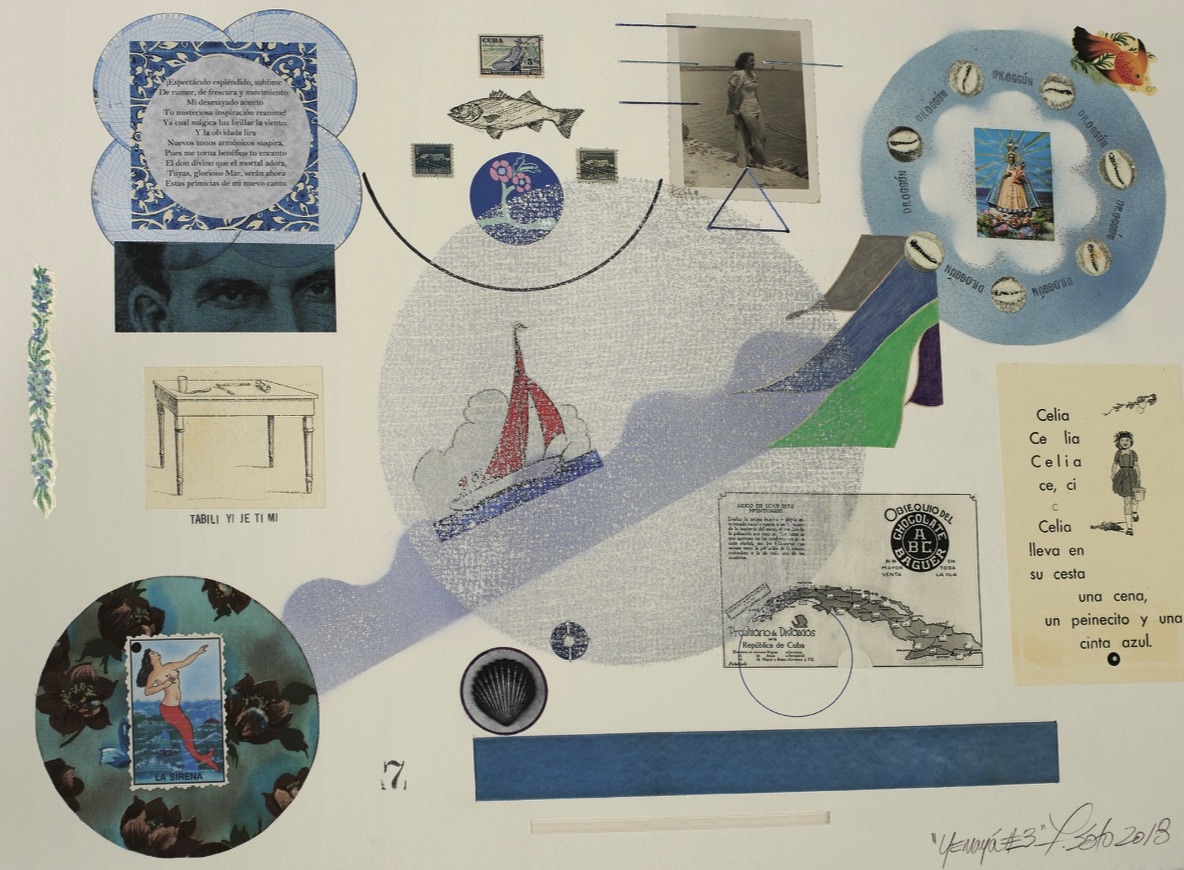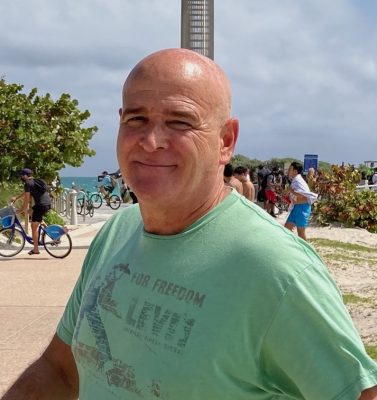
Francisco Soto‘s collage series, Los Orishas, offers a visual representation of survival and resistance, paying homage to Afro-Cuban traditions. Inspired by the image of the Siete Potencias Africanas (Seven African Forces) in which the names of the seven popular Orishas or Yoruba deities (Changó, Orula, Ogún, Eleguá, Obatalá, Yemayá, Ochún) appear above the images of their Catholic counterparts, Soto’s twenty-one collages join fragmented and unconventional elements into a new whole similar to Santería (the worship of saints) in which the African Lucumí religion and Catholicism co-exist; two religious systems borrowing from each other, creating a new synergy of beliefs and traditions. In this collage series, each of the seven African deities receives three collage renderings; three, for the Catholic trinity, thus in total twenty-one pieces. The works were completed and professionally framed through generous support from CUNY’s Research Awards, and a special catalog edition of the work was published in May 2022.
Soto’s trajectory as a collagist began in 2016. He completed his first collage series Los Orishas (twenty-one 30” x 22” mixed-media collages) in 2018. He began a second collage series in 2018 titled After Lam (fifteen 12” x 16” mixed-media collages assembled vertically and horizontally inspired by the works of Cuban artist Wifredo Lam), and currently he is underway with a third series dedicated to Ayáguna, the youngest path to Obatalá, memorializing the AIDS crisis of the 1980s and 1990s.
The author/artist will be introduced by Prof. Elena Martínez, of the Department of Comparative Literatures of Baruch College (CUNY), who will also moderate a Q&A session following the presentation.
[Image above: Francisco Soto’s Yemaya #3, 2018]
BARUCH COLLEGE
VC-13 Room 150
Lexington at 25th Street, NYC
This event is part of our CreateNYC Language Access Series on Cuban History, Art, and Literature. It will be held in English and Spanish.
SPACE IS LIMITED
PLEASE RSVP at: aymara@cubanculturalcenter.org

Born in Cuba but exiled to the United States at the age of five, Francisco Soto’s Cuban heritage is an essential part of his identity. In 1988,he earned a doctorate in Latin American Literature. He has published extensively in Spanish and English, both nationally and internationally. His articles, essays, notes, and reviews, mostly on Cuban and Cuban-American figures, have appeared in prestigious literary journals and magazines. He has authored three books on the work of Reinaldo Arenas: Reinaldo Arenas (Twayne’s World Author Series, 1998), Reinaldo Arenas: The Pentagonía (University of Florida Press, 1994), and Conversación con Reinaldo Arenas (Madrid: Editorial Betania, 1990). In 1991, he was awarded the First Prize in the Latin American Writers Institute Translation Awards for his translation of El profesor de humanidades by Puerto Rican writer Julia Ortiz-Griffin. In the last few years, along with his esteemed colleague at City University of New York Dr. Elena M. Martínez from Baruch College, they have completed two edited volumes on Cuban writers: Cuban dramatist Pedro R. Monge Rafuls, Identidad y diáspora: El teatro de Pedro R. Monge Rafuls (2014) and Entre Islas: la imaginación poética de Magali Alabau, Alina Galliano, Lourdes Gil, Maya Islas e Iraida Iturralde (2018). Francisco’s extensive background in literature, philosophy and the arts has given him a unique aesthetic and conceptual understanding of artistic expression. At this juncture in his professional and personal life, he explores multiple modes of interdisciplinary expression, searching for diverse forms of creative representation that allow him to denote the complexities of human existence.
This event is presented in association with the Department of Modern Languages and Comparative Literature at Baruch College
And is supported, in part, by public funds from the New York City Department of Cultural Affairs in partnership with the City Council, and made possible by the New York State Council on the Arts with the support of the Governor and the New York State Legislature.
![]()
![]()
With the promotional collaboration of
 and
and
![]()
